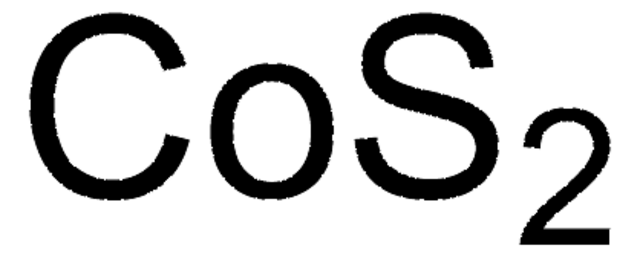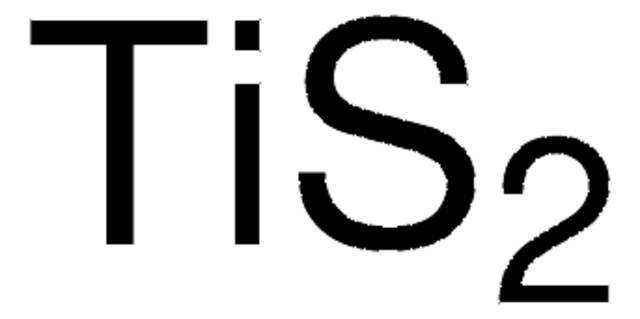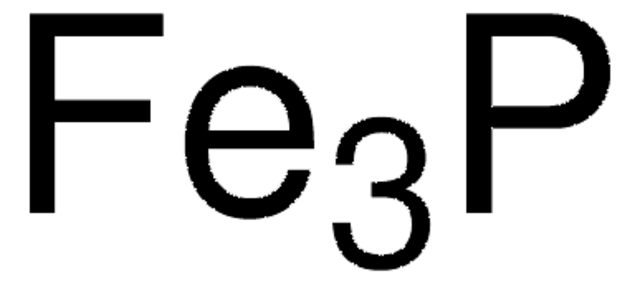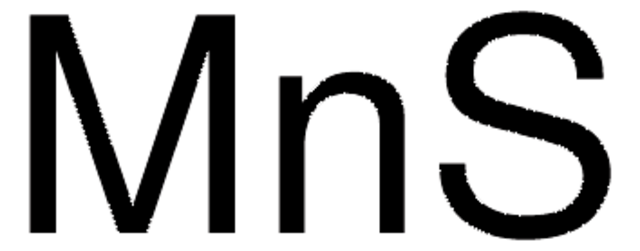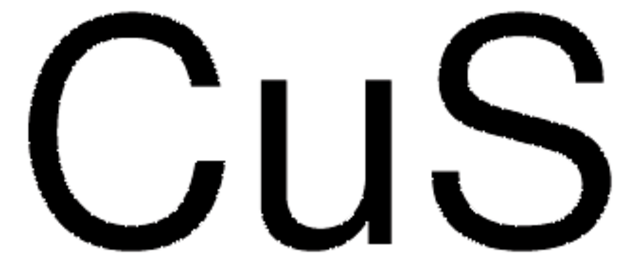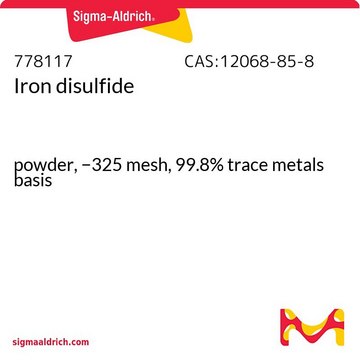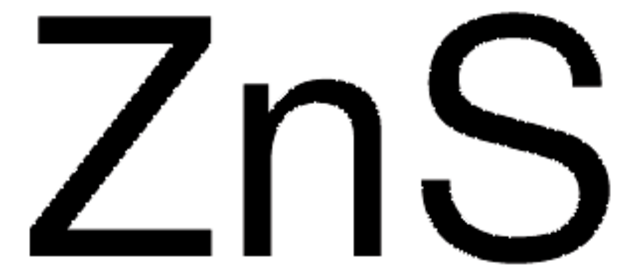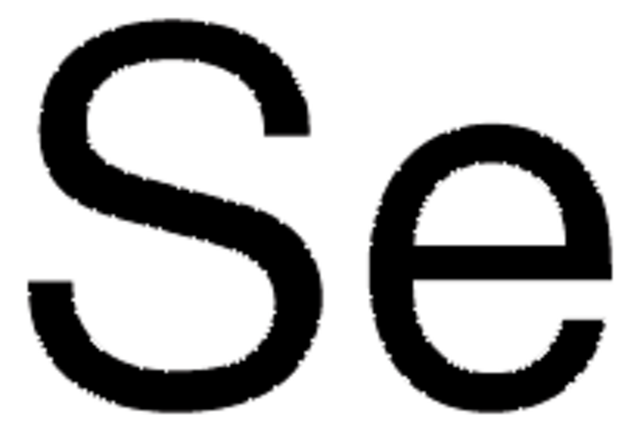343226
Nickel sulfide
99.7% trace metals basis, −150 mesh
Sinónimos:
Nickel subsulfide
About This Item
Productos recomendados
Quality Level
assay
99.7% trace metals basis
form
powder
reaction suitability
reagent type: catalyst
core: nickel
particle size
−150 mesh
density
5.8 g/mL at 25 °C (lit.)
application(s)
battery manufacturing
SMILES string
[Ni]=S=[Ni]=S=[Ni]
InChI
1S/3Ni.2S
InChI key
YGHCWPXPAHSSNA-UHFFFAOYSA-N
General description
Application
Packaging
signalword
Danger
Hazard Classifications
Acute Tox. 3 Inhalation - Aquatic Acute 1 - Aquatic Chronic 1 - Carc. 1A Inhalation - Muta. 2 - Skin Sens. 1 - STOT RE 1 Inhalation
target_organs
Lungs
Storage Class
6.1D - Non-combustible acute toxic Cat.3 / toxic hazardous materials or hazardous materials causing chronic effects
wgk_germany
WGK 3
flash_point_f
Not applicable
flash_point_c
Not applicable
ppe
Eyeshields, Faceshields, Gloves, type P3 (EN 143) respirator cartridges
Elija entre una de las versiones más recientes:
¿Ya tiene este producto?
Encuentre la documentación para los productos que ha comprado recientemente en la Biblioteca de documentos.
Los clientes también vieron
Nuestro equipo de científicos tiene experiencia en todas las áreas de investigación: Ciencias de la vida, Ciencia de los materiales, Síntesis química, Cromatografía, Analítica y muchas otras.
Póngase en contacto con el Servicio técnico